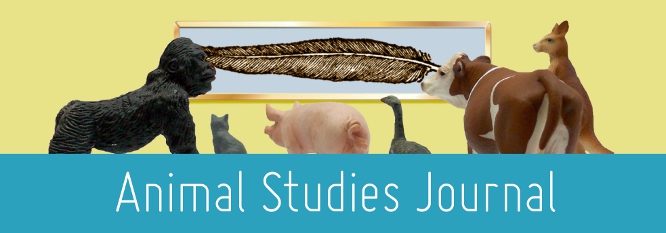Home > assh > ASJ > Vol. 8 (2019) > No. 1

Abstract
Eisenman imagines, in 2050, in a scenario devoutly to be wished and striven for, that animals are no longer ill-treated in zoos, factory farms or laboratories. His informative essay substantiates debates in animal ethics, historically and in art, relating the ‘thingification’ of animals to colonial notions of ‘racial’ superiority. Sue Coe’s work, he demonstrates, comes from a long history of protest against the treatment of animals in zoos and menageries. Like John Berger in Why Look at Animals? (Penguin, 2009), he connects zoos with money-making, dismissing the claims that zoos are geared for conservation. Eisenman regards Sue Coe as the foremost artist inspired to ‘witness’ and ‘represent’ animal suffering. We, the viewers, witness this suffering anew through Coe’s powerful, devastating artworks. Coe shows the effects on animals of being transformed into entertainment for unappreciative and unsympathetic humans. The very first illustration obliterates any possibilities of zoo or circus animals being happy: in nightmarish half-light, circus animals lie splayed next to a wrecked train in Pennsylvania in 1893. A few have been liberated from their cages but not for long. At the centre of the action stands a man with a pitchfork like the devil incarnate. The live animals seem immobilised by shock; only a lion has taken advantage of his freedom and is attacking a cow. The animals themselves are emaciated, which attests to their lives of suffering even before this illustrated horror.
Recommended Citation
Woodward, Wendy, [Review] Sue Coe, Zooicide: Seeing Cruelty, Demanding Abolition. With an Essay by Stephen F. Eisenman AK Press, 2018. 128pp, Animal Studies Journal, 8(1), 2019, 224-226.Available at:https://ro.uow.edu.au/asj/vol8/iss1/13
Included in
Agricultural and Resource Economics Commons, Art and Design Commons, Art Practice Commons, Australian Studies Commons, Communication Commons, Creative Writing Commons, Digital Humanities Commons, Education Commons, English Language and Literature Commons, Feminist, Gender, and Sexuality Studies Commons, Film and Media Studies Commons, Fine Arts Commons, Legal Studies Commons, Linguistics Commons, Philosophy Commons, Political Science Commons, Public Health Commons, Race, Ethnicity and Post-Colonial Studies Commons, Sociology Commons, Theatre and Performance Studies Commons

